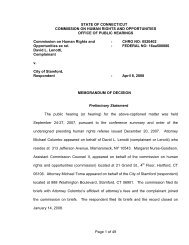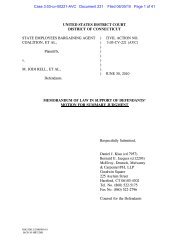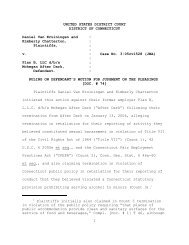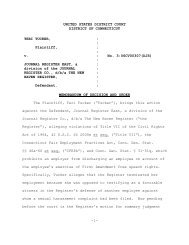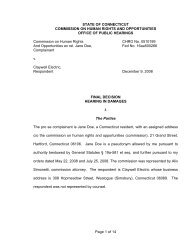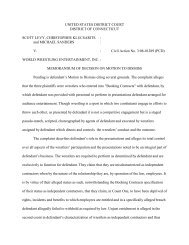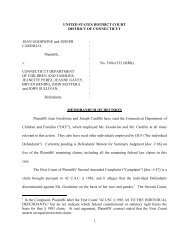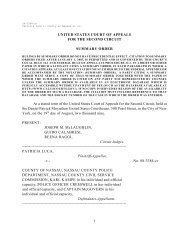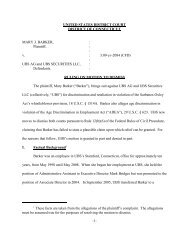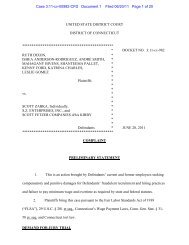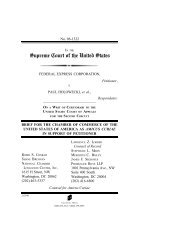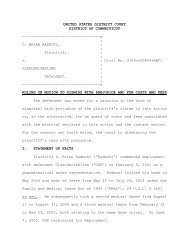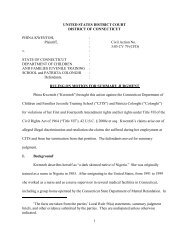O'Dea v. Shea, et al - Connecticut Employment Law Blog
O'Dea v. Shea, et al - Connecticut Employment Law Blog
O'Dea v. Shea, et al - Connecticut Employment Law Blog
- No tags were found...
Create successful ePaper yourself
Turn your PDF publications into a flip-book with our unique Google optimized e-Paper software.
the Spring of 2004, <strong>Shea</strong> purchased refurbished used furniture for the D<strong>et</strong>oxification Unit at thehospit<strong>al</strong>. When O’Dea found out about the purchase, she spoke with <strong>Shea</strong>, in <strong>Shea</strong>’s office,about her concern that use of refurbished furniture in a medic<strong>al</strong> unit “raises a lot of he<strong>al</strong>th careissue [sic].” According to O’Dea, she was concerned that bringing used furniture into the facilitywould lead to more insect infestations.In May 2004, <strong>Shea</strong> gave O’Dea a “satisfactory” written ev<strong>al</strong>uation that contained2unfavorable materi<strong>al</strong>. <strong>Shea</strong> claims that she received this ev<strong>al</strong>uation as a result of her complaintconcerning <strong>Shea</strong>’s purchase of the furniture.III.Summary Judgment StandardIn a summary judgment motion, the burden is on the moving party to establish that thereare no genuine issues of materi<strong>al</strong> fact in dispute and that it is entitled to judgment as a matter oflaw. See Fed. R. Civ. P. 56; Anderson v. Liberty Lobby, Inc., 477 U.S. 242, 256 (1986). A courtmust grant summary judgment “if the pleadings, depositions, answers to interrogatories, andadmissions on file, tog<strong>et</strong>her with the affidavits, if any, show that there is no genuine issue as toany materi<strong>al</strong> fact.” Celotex Corp. v. Catr<strong>et</strong>t, 477 U.S. 317, 322 (1986) (quoting Fed. R. Civ. P.5(c)); accord Miner v. Glen F<strong>al</strong>ls, 999 F.2d 655, 661 (2d Cir. 1993). A dispute regarding amateri<strong>al</strong> fact is genuine “if the evidence is such that a reasonable jury could r<strong>et</strong>urn a verdict forthe nonmoving party.” Anderson, 477 U.S. at 248.Where, as in this case, the nonmoving party has the burden of proof at tri<strong>al</strong>, the moving2According to the ev<strong>al</strong>uation, <strong>Shea</strong> compl<strong>et</strong>ed the ev<strong>al</strong>uation on April 1, 2004 and gave itto O’Dea on May 25, 2004. The Complaint <strong>al</strong>leges that <strong>Shea</strong> backdated the ev<strong>al</strong>uation. InFebruary 2004, O’Dea received an ev<strong>al</strong>uation indicating that she performed at a “satisfactory”level in approximately 80 percent of areas ev<strong>al</strong>uated, and at the “above average” or “outstanding”level in the remaining areas.-2-



